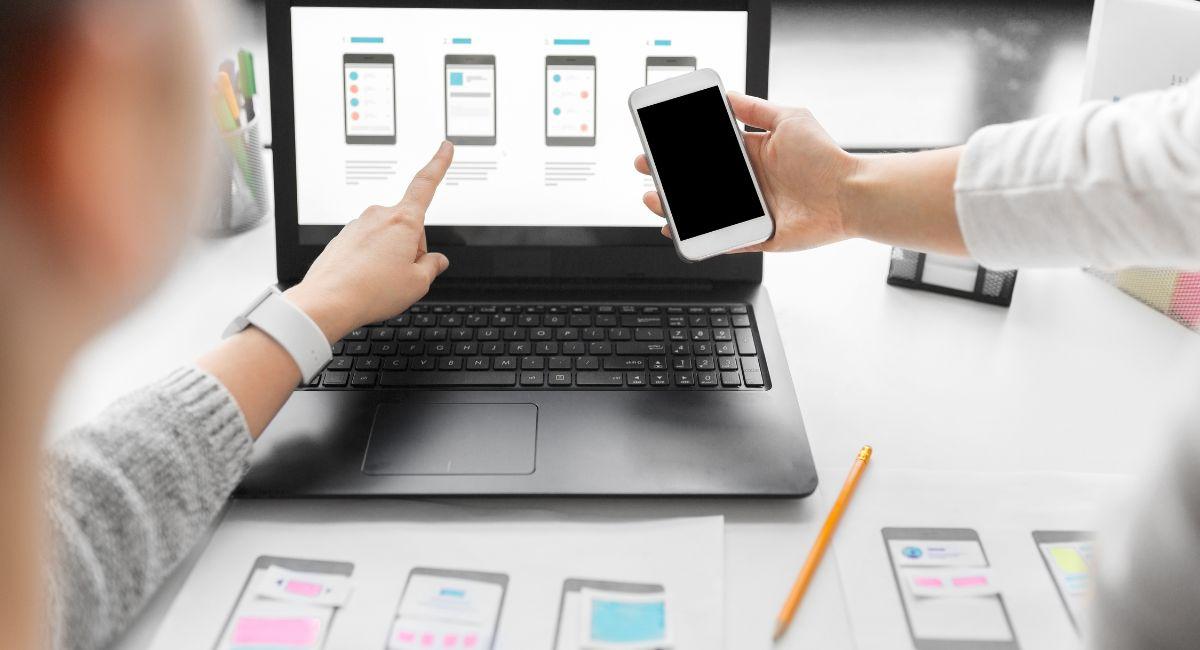What Are Flash Loans In The DeFi market And Its Top 4 Shocking Examples
Decentralized Finance (DeFi) refers to a novel financial system built on blockchain technology, aiming to recreate traditional financial services in a decentralized manner, eliminating the need for intermediaries like banks or brokers. At its core, DeFi leverages smart contracts – self-executing contracts with the terms directly written into code – to automate and enforce agreements between parties without the need for intermediaries.
Key components of DeFi include lending and borrowing platforms, decentralized exchanges (DEXs), asset management protocols, and synthetic asset platforms. Through DeFi, users can lend their cryptocurrency assets to earn interest, borrow against their holdings, trade assets directly with others without relying on centralized exchanges, and access a wide range of financial products and services.
DeFi projects often rely on decentralized autonomous organizations (DAOs) to govern their operations, allowing stakeholders to vote on key decisions and shape the direction of the platform. This decentralized governance model aims to promote transparency, fairness, and community involvement.
While DeFi offers exciting opportunities for financial inclusion, innovation, and democratization of access to financial services, it also presents risks such as smart contract vulnerabilities, regulatory uncertainties, and market volatility. Despite these challenges, the DeFi ecosystem has experienced rapid growth, attracting significant investment and fostering experimentation with new financial primitives and business models.
Overall, DeFi represents a paradigm shift in the way financial services are accessed and provided, empowering individuals with greater control over their assets and financial decisions while challenging traditional financial intermediaries.
Flash Loans: A Double-Edged Sword for the DeFi Market

Flash loans are a unique feature of decentralized finance (DeFi) that allows users to borrow funds from a liquidity pool without the need for collateral, provided the borrowed amount is repaid within the same transaction block. Unlike traditional loans, flash loans are uncollateralized and are typically executed programmatically through smart contracts on blockchain platforms like Ethereum.
Benefits of Flash Loans:
- Arbitrage Opportunities: Flash loans allow traders to exploit temporary price inefficiencies across different DeFi exchanges. They can borrow a cryptocurrency at a lower price on one platform, sell it for a higher price on another, and repay the loan with a profit – all within a single transaction.
- Liquidations: Flash loans can be used to efficiently liquidate undercollateralized loans in DeFi protocols. This helps maintain the overall health of the lending ecosystem by preventing bad debt from accumulating.
- Collateral Swaps: Borrowers can use flash loans to replace expensive collateral with cheaper alternatives, optimizing their borrowing positions within DeFi protocols.
Risks and Challenges:
- Market Manipulation: Malicious actors can exploit flash loans to manipulate markets. For instance, they could borrow a large amount of a specific cryptocurrency to drive its price up artificially, then sell it for a quick profit before the price corrects. This can harm regular DeFi users.
- Smart Contract Vulnerabilities: Since flash loan transactions involve complex smart contract interactions, any vulnerabilities in the code can be exploited by attackers to steal funds. This highlights the importance of rigorous security audits for DeFi protocols.
- Flash Loan Bots: The ease and speed of flash loans have led to the emergence of bots that can automate complex arbitrage and liquidation strategies. This can create an uneven playing field for smaller players in the DeFi market.
Here’s how flash loans work:
- Initiation: A user initiates a flash loan by interacting with a smart contract on a DeFi platform that supports this feature. They specify the amount of funds they wish to borrow and the conditions for the loan.
- Execution: If the conditions of the loan are met within a single transaction block, the smart contract approves and disburses the requested funds to the borrower’s wallet. The borrower can then use these funds for various purposes within the same transaction.
- Repayment: The borrower is required to repay the borrowed funds plus any fees or interest accrued within the same transaction block. If the borrower fails to do so, the entire transaction is reverted, and the loan is effectively canceled.
Flash loans are often used for arbitrage opportunities, collateral swapping, and other sophisticated trading strategies that require large amounts of capital on a short-term basis. Since flash loans do not require collateral, they enable users to access significant liquidity without tying up their own assets, making them particularly attractive for traders and developers.
However, flash loans also introduce risks, such as the possibility of price manipulation, market instability, and vulnerabilities in smart contract codes. In some cases, malicious actors have exploited these vulnerabilities to carry out attacks on DeFi platforms, resulting in significant losses for users and platforms alike.
Despite these risks, flash loans continue to play a crucial role in the DeFi ecosystem, enabling innovative financial products and services while highlighting the importance of robust security measures and risk management practices within decentralized finance.
✨SCALLOP ACHIEVEMENTS✨
— Scallop (@Scallop_io) March 5, 2024
Q1 2024 has been amazing for Scallop as we achieve many new milestones!
Let’s recap👇
💧Scallop TVL ATH: $156M
💧Total Lending/Borrowing Volume: $15 Billion
💧Total Flash Loan Volume: $2 Billion
Exciting events coming, Turn on Notifications🔔! pic.twitter.com/XmpJijfigV
Flash loans in DeFi Market
Flash loans have become a prominent feature within the decentralized finance (DeFi) market, offering users unprecedented access to large pools of liquidity without requiring collateral. These loans have revolutionized the DeFi landscape by enabling sophisticated trading strategies, arbitrage opportunities, and rapid capital deployment for various purposes.
One of the key advantages of flash loans in the market is their ability to facilitate complex financial operations within a single transaction block on the blockchain. This means that borrowers can borrow funds, execute their intended trades or operations, and repay the loan—all within the span of a few seconds. This rapid execution allows for efficient capital utilization and opens up new avenues for profit generation.
Flash loans are particularly popular among traders and developers who leverage them for a wide range of purposes, including:
- Arbitrage: Traders can exploit price discrepancies between different cryptocurrency exchanges or trading pairs to make risk-free profits. Flash loans enable traders to borrow large sums of capital instantly to execute arbitrage trades before prices equalize.
- Liquidity Provision: Liquidity providers can use flash loans to quickly inject funds into decentralized exchanges (DEXs) or liquidity pools, earning fees for providing liquidity. This helps improve liquidity on DeFi platforms and facilitates smoother trading experiences for users.
- Collateral Swapping: Borrowers can use flash loans to quickly swap one type of collateral for another within DeFi protocols, optimizing their capital efficiency and reducing their exposure to risk.
- Protocol Manipulation: While not endorsed, flash loans have been used in attacks on vulnerable DeFi protocols. In these instances, malicious actors exploit vulnerabilities in smart contracts to manipulate prices, drain liquidity, or exploit other weaknesses.
Despite their potential benefits, flash loans also pose certain risks to the DeFi market, including the potential for price manipulation, market instability, and smart contract vulnerabilities. As the DeFi ecosystem continues to evolve, regulators and platform developers are working to address these risks through improved security measures, risk management protocols, and regulatory oversight. Overall, flash loans have emerged as a powerful tool for innovation and efficiency within the DeFi market, driving growth and expanding the possibilities of decentralized finance.
Flash Loans: A Force of Change in the DeFi Arena – A Deep Dive into Their Impact
Flash loans, with their ability to instantly grant massive sums of cryptocurrency without upfront collateral, have become a game-changer in the Decentralized Finance (DeFi) landscape. Their unique characteristics hold the potential to revolutionize the way DeFi operates, but also introduce complexities that demand careful consideration. Let’s delve deeper into the multifaceted impact of flash loans on the DeFi market.
Boosting Efficiency: A Well-Oiled Machine
- Enhanced Price Discovery: Flash loans act as grease on the wheels of DeFi by enabling arbitrage opportunities. When price discrepancies exist across different DeFi exchanges, flash loans allow arbitrageurs to exploit these inefficiencies. They can borrow a cryptocurrency at a lower price on one platform, instantly sell it for a higher price on another, and repay the loan within the same transaction. This constant back-and-forth activity by arbitrageurs helps drive prices towards a more accurate reflection of their true market value.
- Streamlined Liquidations: Flash loans play a crucial role in maintaining the health of DeFi lending protocols. When a borrower’s collateralized loan falls below a certain value (becomes undercollateralized), it poses a risk to the entire system. Flash loans empower users to identify and liquidate such undercollateralized loans swiftly. By swiftly seizing the undercollateralized assets and selling them off to repay the original loan, flash loans help prevent bad debt from accumulating and ensure the overall stability of the lending ecosystem.
- Optimized Borrowing Strategies: The flexibility of flash loans allows borrowers to optimize their positions within DeFi protocols. Imagine a borrower who has locked up expensive cryptocurrency as collateral for a loan. With a flash loan, they can borrow a different, cheaper cryptocurrency, use it to replace the expensive collateral, and free up their original asset. This ability to swap collateral for more strategic alternatives empowers borrowers to manage their positions more efficiently.
Innovation Unleashed: A Breeding Ground for New Ideas
- Unforeseen Applications: The permissionless nature of DeFi, coupled with the power of flash loans, creates a fertile ground for innovation. Developers are constantly exploring new and inventive ways to leverage flash loans. This could lead to the emergence of entirely new financial products and services within the DeFi space, further expanding the possibilities of this revolutionary technology.
- Composability and Automation: Flash loans, when combined with other DeFi building blocks like smart contracts, can unlock a new level of composability. Imagine a complex financial strategy involving multiple DeFi protocols. Flash loans can be integrated into such strategies, allowing for seamless execution and automation within a single transaction. This composability opens doors for the creation of sophisticated financial instruments that were previously unimaginable.
Challenges and Considerations: The Thorns Amongst the Roses
- Market Manipulation: Malicious actors can exploit flash loans to manipulate markets for personal gain. Imagine a scenario where an attacker borrows a massive amount of a specific cryptocurrency using a flash loan. This sudden surge in demand can drive the price of the cryptocurrency artificially high. The attacker can then sell their holdings at the inflated price before the market corrects, pocketing a quick profit and leaving regular DeFi users holding the bag when the price inevitably crashes.
- Security Vulnerabilities: Flash loans introduce a new layer of complexity to DeFi protocols. Since flash loan transactions involve intricate smart contract interactions, any vulnerabilities in the underlying code can be disastrous. Malicious actors can exploit these weaknesses to steal funds or manipulate the protocol’s logic, potentially leading to significant financial losses for users.
- Uneven Playing Field: The ease and speed of flash loans have paved the way for the emergence of sophisticated bots. These bots can automate complex arbitrage and liquidation strategies, potentially creating an uneven playing field for smaller players in the DeFi market. Regular users might struggle to compete with the speed and efficiency of these bots, limiting their ability to capitalize on arbitrage opportunities.
Example of Flash loans in DeFi Market

One notable example of flash loans in the DeFi market involves arbitrage opportunities across decentralized exchanges (DEXs). Suppose there’s a price discrepancy between two DEXs for the same asset pair, such as Ethereum (ETH) trading for a higher price on one exchange compared to another. Traders can exploit this price difference through a flash loan arbitrage strategy.
Here’s how it works:
- Identify Opportunity: A trader identifies a price difference between two DEXs, where ETH is trading at a higher price on Exchange A compared to Exchange B.
- Execute Flash Loan: The trader initiates a flash loan from a DeFi platform, borrowing a large sum of ETH without any collateral.
- Arbitrage Execution: With the borrowed ETH, the trader purchases ETH at the lower price on Exchange B and simultaneously sells it at a higher price on Exchange A. This exploits the price difference and generates a profit.
- Repayment: Within the same transaction block, the trader repays the flash loan along with any associated fees or interest. If successful, the trader keeps the profit generated from the arbitrage.
This example illustrates how flash loans enable traders to capitalize on market inefficiencies and profit from rapid price disparities across decentralized exchanges. By borrowing funds instantly and executing trades within the same transaction block, flash loans facilitate quick and efficient arbitrage opportunities that may not be feasible with traditional loans or capital.
However, it’s important to note that while flash loans offer opportunities for profit, they also come with risks. Market volatility, transaction fees, and smart contract vulnerabilities can impact the success of flash loan arbitrage strategies. Additionally, traders must have a deep understanding of market dynamics and execute trades swiftly to capitalize on fleeting opportunities effectively.
Conclusion
In conclusion, flash loans have emerged as a groundbreaking feature within the decentralized finance (DeFi) market, offering users unprecedented access to liquidity and enabling a wide range of innovative financial strategies. These loans have revolutionized the way capital is deployed in the DeFi ecosystem, allowing traders and developers to execute complex transactions within a single blockchain transaction block.
Despite their relatively recent introduction, flash loans have quickly become a cornerstone of DeFi, providing users with opportunities for arbitrage, liquidity provision, collateral swapping, and more. These loans have significantly improved capital efficiency and market liquidity, driving growth and innovation within the DeFi space.
However, it’s essential to acknowledge the risks associated with flash loans, including the potential for market manipulation, instability, and vulnerabilities in smart contracts. Instances of flash loan attacks on vulnerable DeFi protocols have highlighted the importance of robust security measures, risk management protocols, and regulatory oversight within the DeFi ecosystem.
As the DeFi market continues to evolve, it’s crucial for stakeholders to address these risks proactively while maximizing the benefits that flash loans offer. This includes implementing rigorous security standards, conducting thorough audits of smart contracts, and fostering collaboration between industry participants, regulators, and security experts.
Overall, flash loans represent a significant milestone in the evolution of decentralized finance, demonstrating the power of blockchain technology to transform traditional financial services and empower users with greater access to liquidity and financial opportunities. With continued innovation and responsible use, flash loans have the potential to further drive the growth and adoption of DeFi, paving the way for a more inclusive, efficient, and resilient financial system.
Stay informed with daily updates from Blockchain Magazine on Google News. Click here to follow us and mark as favorite: [Blockchain Magazine on Google News].
Get Blockchain Insights In Inbox
Stay ahead of the curve with expert analysis and market updates.
latest from tech
Disclaimer: Any post shared by a third-party agency are sponsored and Blockchain Magazine has no views on any such posts. The views and opinions expressed in this post are those of the clients and do not necessarily reflect the official policy or position of Blockchain Magazine. The information provided in this post is for informational purposes only and should not be considered as financial, investment, or professional advice. Blockchain Magazine does not endorse or promote any specific products, services, or companies mentioned in this posts. Readers are encouraged to conduct their own research and consult with a qualified professional before making any financial decisions. The featured image used is just a creative depiction of the title and it does not intend to hurt sentiments of any person or institution. If it hurts anyone sentiments, please do not hesitate to reach out to Blockchain Magazine.

 Bitcoin
Bitcoin  Ethereum
Ethereum  XRP
XRP  Tether
Tether  Solana
Solana  Dogecoin
Dogecoin  USDC
USDC  Cardano
Cardano  Lido Staked Ether
Lido Staked Ether  TRON
TRON  Chainlink
Chainlink  Avalanche
Avalanche  Wrapped stETH
Wrapped stETH  Stellar
Stellar  Wrapped Bitcoin
Wrapped Bitcoin  Sui
Sui  Hedera
Hedera  Toncoin
Toncoin  Shiba Inu
Shiba Inu  WETH
WETH  Polkadot
Polkadot  Parkcoin
Parkcoin  LEO Token
LEO Token  Bitget Token
Bitget Token  Litecoin
Litecoin  Bitcoin Cash
Bitcoin Cash  Uniswap
Uniswap  Hyperliquid
Hyperliquid  Official Trump
Official Trump  Wrapped eETH
Wrapped eETH  Pepe
Pepe  USDS
USDS  NEAR Protocol
NEAR Protocol  Ethena USDe
Ethena USDe  Aave
Aave  Aptos
Aptos  Internet Computer
Internet Computer  Ondo
Ondo  Monero
Monero  Ethereum Classic
Ethereum Classic  POL (ex-MATIC)
POL (ex-MATIC)  OKB
OKB  Cronos
Cronos  Dai
Dai  Mantle
Mantle  Algorand
Algorand  Render
Render  MANTRA
MANTRA 




